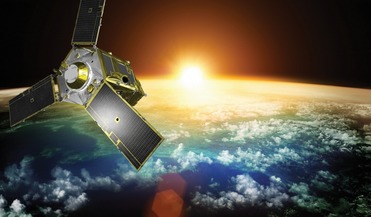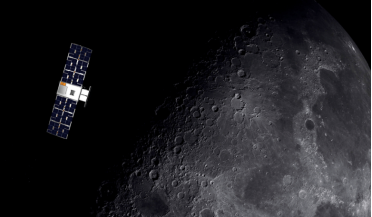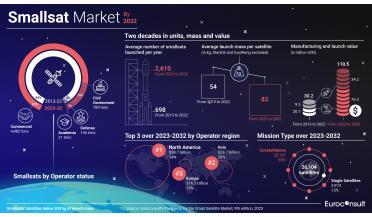 October 2019
Ground segment transformation - convergence of NewSpace and the cloud
October 2019
Ground segment transformation - convergence of NewSpace and the cloud
... represents a material departure from the established norms and behaviours of the space industry. Generally, each satellite constellation builds a unique ground station network to serve the specific needs of its mission. The high cost of establishing...
 August 2017
Space invaders and the usual suspects - disruptive trends in Earth observation
August 2017
Space invaders and the usual suspects - disruptive trends in Earth observation
... massive use of high-performance commercial off-the-shelf (COTS) technologies has already proved the feasibility of constellations of several tens of cubesats weighing around 5 kg and costing a few thousands of dollars per unit. But NewSpace is not...
 September 2023
Satellite manufacturing - building to size, speed and security
September 2023
Satellite manufacturing - building to size, speed and security
... and revenue fulfilment. The software also deals with data collection planning, so that we can manage the constellation at the fleet level. Terran Orbital also collaborated with Lawrence Livermore National Laboratory (LLNL) which developed...
 April 2017
Sky-fi dawn of the space internet era
April 2017
Sky-fi dawn of the space internet era
... with the use of artificial intelligence are still in the future. LEO satellite constellations are the truly global option. Depending on the type of constellation in place, they can cover the whole of planet Earth continuously. Satellites offer...
 01 August 2023
Report predicts continued growth of smallsat market
01 August 2023
Report predicts continued growth of smallsat market
... the 10-year period, according to Euroconsult, the leading global strategy consulting and market intelligence firm. Two constellations alone - Starlink (SpaceX) and GuoWang (China SatNet) - will collectively account for nearly two-thirds of smallsats...
 January 2020
Satellite-based IoT - the race is on
January 2020
Satellite-based IoT - the race is on
... or around 600 billion smart meters. Incumbent SatCom operators like Iridium, which finished replacing its original constellation by sending 75 new Iridium satellites into space this year, have been providing connectivity services for decades...